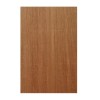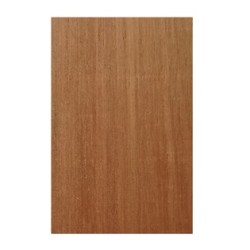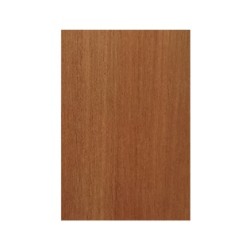Brazilian Mahogany

Family: Meliaceae - Order: Sapindales
- Class: Magnoliopsida
Scientific name: Swietenia macrophylla King
Trade name: Brazilian Mahogany,
Caoba, Mara, Aguano
Also
known as Acajou, Brazilian Mahogany,
Caoba, Mogno
Origin:
Brazil mainly,
more abundant on Amazonas and Para
States, also Central and Tropical South América.
Instrumental uses:
Guitar back and sides, guitar necks, electrical guitar bodies, head plates,
bindings and inlays.
Tonal properties:
Very
responsive and highly dynamic. It produces a strong loud sound. Tight basses, a wide midrange
spectrum of frequencies and is clear on high frequencies.
Very
versatile tonewood.
Relatively easy to
work, it bends and finishes very well.
Is resistant to
termites but not to all insects.
Average dried weight 37 lbs/ft3 (590 kg/m3)
There are 3 species in the family, first we
have the Swietenia mahogany, the Cuban
mahogany, with a darker color than the second species; Swietenia humilis. Humilis means small: Regarded as genuine mahogany and similar to
the third species Swietenia macrophylla King but only grows to 6 metres high.
Swietenia macrophylla is called the Honduran Mahogany also caoba del Pacifico.
It is a more yellowish brown. The
Brazilian mahogany, Swietenia macrophylla King, is an Amazonian native species.
It grows in Brazil very abundantly in Amazonas and Para states, also from
Central America to tropical South America. It is now planted all over the
tropics. Plantations are reported in Fiji, Solomon Islands, Malaysia,
Philippines, India, Nigeria and Sierra Leone.It can reach a height of 35 m,
with a diameter of 130 cm or more, but more commonly about 80 to 100 cm. The
bole is cylindrical and straight, free of branches to about 15 to 20 m. Very popular in furniture, turned objects, musical
instruments and carving.
The
sapwood is distinct but not clearly demarcated from the heartwood. The
heartwood is reddish or pinkish brown when freshly cut, turning into a deep
rich red brown color after exposure.
CITES status is protected under the Appendix II. On the IUCN Red List is reported as vulnerable.
Gallery Photos




